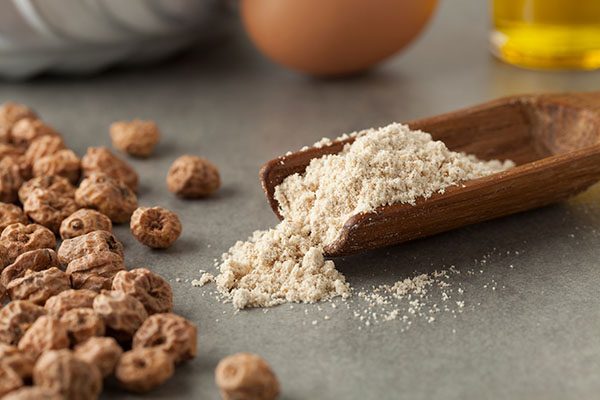
Advertisement
Fresh fruits and veggies are essential components of a balanced diet. According to health experts, eating microgreens can also boost your nutrient intake.
Although microgreens are smaller than other whole foods, they’re popular among health enthusiasts because they’re chock-full of micronutrients.
Dr. Wendie Trubow, an expert on women’s health, suggests incorporating microgreens into your diet to improve your overall well-being. She says they have “tremendous micronutrient concentration.”
The difference between microgreens and sprouts
Although sprouts and microgreens share some similarities, sprouts don’t have leaves. They also have a shorter growing cycle of two to seven days.
Microgreens, on the other hand, are vegetables that are harvested right after their leaves develop. They fall somewhere between sprouts and baby greens.
Microgreens are often used as a garnish for salads, sandwiches or soups. They can be harvested seven to 21 days after germination or once the plant’s first true leaves have emerged.
Microgreens can be grown from different types of seeds. The most popular varieties come from the following plant families:
- Amaranthaceae family – Amaranth, beet, quinoa, spinach and Swiss chard
- Amaryllidaceae family – Garlic, leek and onion
- Apiaceae family –Carrot, celery, dill and fennel
- Asteraceae family – Chicory, endive, lettuce and radicchio
- Brassicaceae family – Arugula, broccoli, cabbage, cauliflower, radish, and watercress
- Cucurbitaceae family –Cucumber, melon and squash
Cereals like barley, corn, oats, rice and wheat, and legumes like beans, chickpeas and lentils can also be grown into microgreens.
Microgreens have various flavor profiles. They can be bitter, slightly sour or neutral, depending on the variety. Overall, the flavor of microgreens is considered “strong and concentrated.”
Health benefits of microgreens
Microgreens taste delicious and have unusually high nutritional value. They are a great source of vitamins C, E and K.
Microgreens also contain phytonutrients called carotenoids, which can help boost immune function.
In one study conducted by the United States Department of Agriculture (USDA), researchers examined 25 varieties of microgreens to see how their nutrient content compared to other vegetables.
Findings revealed that overall, “microgreens contained considerably higher levels of vitamins and carotenoids—about five times greater—than their mature plant counterparts, an indication that microgreens may be worth the trouble of delivering them fresh during their short lives.”
How to grow microgreens at home
If you want to save a bit of money, you can learn how to grow microgreens at home. They’re easy enough to grow even if you’re a beginner at home gardening, and once you get the hang of things, you can boost your nutrient intake without having to go to the grocery store.
According to Dr. Ilene Ruhoy, a neurologist, you only need simple tools like seeds, a container and water to grow microgreens. The whole process is also cost-effective because a large bag of seeds is affordable and you can keep sprouting the seeds for months.
Unlike other plants, microgreens don’t require much equipment or time. You can also grow them year-round, either indoors or outdoors.
What you will need:
- Good-quality seeds
- A good growing medium, like a container filled with potting soil or homemade compost. You can also use a single-use growing mat specifically designed for growing microgreens
- Proper lighting (either sunlight or ultraviolet lighting), ideally for 12 to 16 hours daily.
Preparation:
- Fill your container with soil, but don’t over-compress it. Water the soil lightly.
- Sprinkle the seed of your choice on top of the soil evenly.
- Lightly mist the seeds with water and cover the container with a plastic lid.
- Check the tray daily and mist with water as needed to keep the seeds moist.
- A couple of days after the seeds have germinated, remove the plastic lid to expose them to light.
- Water the pot once a day while the microgreens grow and gain color.
- You can harvest the microgreens after seven to 10 days.
Cooking with microgreens
Now that you know how to grow microgreens at home, here are some suggestions on how to use these tiny but delicious and nutrient-rich superfoods:
- Toss microgreens into a juice or green smoothie.
- Use microgreens as a tasty garnish for curries, omelets, pizzas, soups or other warm dishes.
- Serve it as an entree.
- Use it as a substitute for lettuce.
- Make an avocado toast with microgreens.
- Add microgreens to burgers, salads, sandwiches or wraps.
- Use microgreens to make DIY guacamole, pesto or salsa verde.
- Prepare cauliflower “steaks” with microgreens.
- Serve seared duck breast with microgreens.
- Make savory pancakes with microgreens.
- Add microgreens to a wild rice salad.
- Use basil microgreens to make a strawberry chocolate tart.
Microgreens are a versatile superfood that can add flavor, color and nutritional value to any dish. Grow microgreens at home and use them to make green juices or tasty salads.
Sources:
Advertisements







